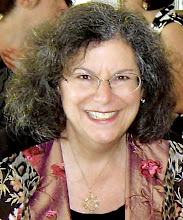

A college class where students learn about NOTHING? Zero. Zip. Absence. And now they’re holding an exhibition, “A Lot of Nothing.”
Although that seems at first blush to be precisely the sort of fodder upon which certain politicians feast, Arcadia University Professor Peter Appelbaum patiently explains what it's all about. In the process, that seasoned educator makes this seasoned academician want to sign up for the course!
In addition to teaching, Professor Appelbaum also coordinates math education at Arcadia, coordinates the curriculum studies graduate program, and serves as director at large for the undergraduate curriculum steering committee.
Arcadia University has a relatively new set of undergraduate curriculum requirements, in which, among other things, students take two University Seminars (US) before graduating. These seminars are interdisciplinary and some expect students to integrate on- and off-campus learning. Small learning groups are taught and practice intellectual skills and processes through a variety of different subject contents.
For example, there’s a Spanish course that qualifies as a University Seminar in quantitative reasoning. How? Students read Latin American newspapers – in Spanish, of course – and analyze and discuss – also in Spanish - the statistics and implications associated with health, social policy and political news.
Appelbaum’s seminar qualifies as a US in visual literacy, in that students study visual communications. Students learn to analyze the concepts they’re studying and how these ideas are connected with visual representations.
Here’s where nothing comes in.
And this void is filled with new vocabulary and scholarly inspiration.
The formal name of the course is US 222 – Everything and Nothing: Visualizing Mathematics, Philosophy and Culture.
The subject of zero has a long and dignified history. A vacuum is a powerful concept in physics. And consider creation stories, says Appelbaum. Creating something from nothing? (Or at least creating something originally, before anything like it ever existed.)
Questions about creation, forever and infinity have been among the greatest in human history, Dr. Appelbaum notes. Creation stories are fundamental across cultures. The concept is truly awesome.
Then come questions about representing ideas and concepts visually – in written language, in art, in objects.
This takes us into worlds this blog can’t: into semiotics; of famed linguist Ferdinand de Saussure; of mathematician/philosopher Brian Rotman; of Zeno and zeno; of paradoxes and opposites as wholes.
But you can enter into this intellectual discussion without having to register for the course. At the entrance to the Landman Library at Arcadia this week, Appelbaum’s students have installed the first of three projects they’ll be working on this semester.
Go this week to see “interactive provocations” that students created to communicate their explorations of Nothing.
They’re accompanied by a looseleaf notebook of statements about their work. A statement by Professor Appelbaum also appears there, describing a presentation he will have this year at a professional conference. Some exhibits operate only at specified times because of the vulnerability of the technology. All are meant to be stimulating in an intellectual way.
There’s one that invites viewers to take a card from the bowl and add it to the installation on the table titled, “Creation.” There are already cards on the table surrounding the words, “Nothing Is.”
Another installation is called “Fingerprint Galaxy.” See what you think, and then read the student’s statement.
During my visit, I heard one viewer exclaim, “Geez, I wish I were taking this course!”
As did last year’s class, these students will use the commentary you write in the guestbook as part of their learning and discussions.
Don’t blow this off as ivory tower nonsense by an effete elite detached from the real world. Contemplate the questions posed by the students: Isn’t nothing something? Who says nothing is impossible? Is silence nothing, or something? Does our life start with nothing? End with nothing? What is infinity?
While you’re at it, ponder the symbolism of installing these exhibits the entryway to a library. And, as one student’s video urges, “Use your eyes to open your mind.”
[Contact Arcadia University: 215-572-2900; www.arcadia.edu]

No comments:
Post a Comment